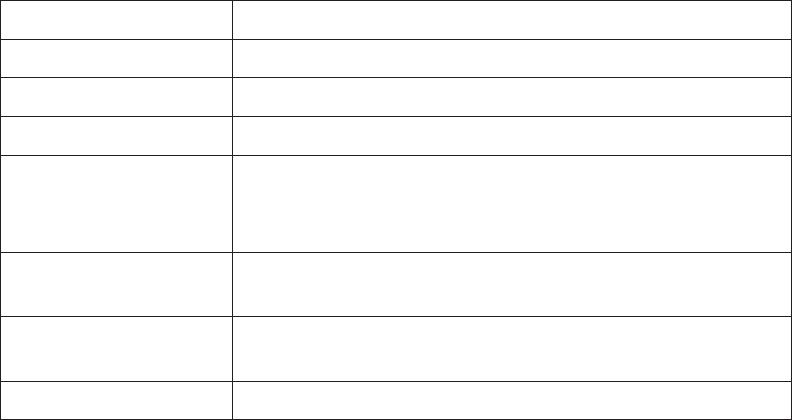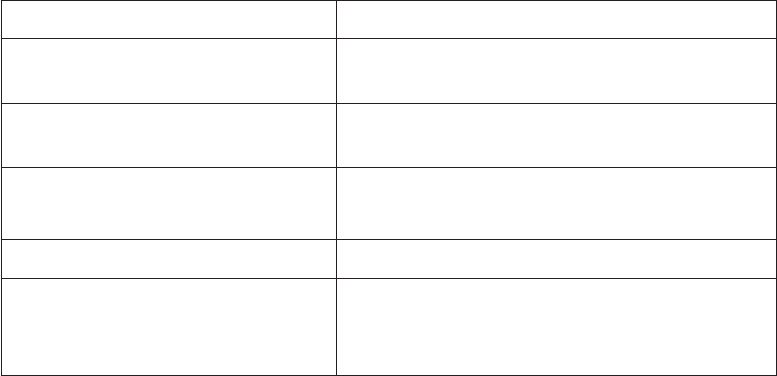
208 ◾ The Guide to Entrepreneurship: How to Create Wealth for Your Company
that fall short of solving the problem, the many different ways attempted by
inventors over time to overcome the difculty, and nally the proposed solu-
tion to the problem by the inventor.
3
However, the Patent Ofce examiner does not edit the terminology used
by the applicants. A well-established judicial principle is that “the inventor
is his own lexicographer.” Terms, conditions, or characterizations are taken
to have the meaning expressed and dened by the inventor, unless they are
misleading or depart completely from accepted practice.
10.3.1 Contents of a Patent
“He hits from both sides of the plate. He’s amphibious.” —Yogi Berra
Patent documents nearly always contain certain common elements, in the
following order:
Subject Statement of the technology eld
Abstract Concise summary of the enabling disclosure
Problem to be solved Prior art; background information
Objects Benets provided by the discovery
Denitions Technical exposition of solution to the problem
Detailed elaboration of all technical aspects of the
invention
Utility Unambiguous description of the practical usefulness of
the invention
Examples Working examples that, if followed, produce the intended
results
Claims Legal description of what is being granted as rights
The rst page of a recent U.S. patent is shown in Figure10.2.
10.3.2 Claims: The Heart of a Patent
From a business perspective, patent claims are the most valuable part of
a patent. Patent claims are the legal basis for your “legal monopoly.” Claims
form a protective boundary line around your patent that lets others know

Intellectual Property ◾ 209
Figure 10.2 First page of a recent patent—A patent follows common elements.
210 ◾ The Guide to Entrepreneurship: How to Create Wealth for Your Company
when they may be infringing on your rights. The limits of this line are
dened by the words and phrasing of your claims.
Claims are usually in the form of a series of numbered expressions or,
more precisely, noun phrases following the description of the invention in a
patent or patent application, and dene, in technical terms, the extent of the
protection conferred by a patent or by a patent application. They are of the
utmost importance during both prosecution and litigation.
Ideally, each claim should have only one meaning, which can be either
broad or narrow, but not both at the same time. In general, a narrow
claim species more details than a broader claim. Having many claims,
where each one is a different scope, allows you to have legal title to
several aspects of your invention. Claims are the legal description of the
exclusive rights granted by the government to the inventor. There are two
basic types of claims: independent claims, which stand on their own,
and dependent claims, which refer to an earlier cited claim or several
claims and generally express particular embodiments as fallback posi-
tions. The expressions “in one embodiment,” “in a preferred embodi-
ment,” “in a particular embodiment,” “in an advantageous embodiment,”
or the like often appear in the description of patent applications and are
used to introduce a particular implementation or method of carrying out
the invention. These embodiments usually correspond to a dependent
claim or could form the basis of a dependent claim. Each dependent
claim is, by law, more narrowly dened than the independent claim upon
which it depends.
10.3.3 Claims Categories
Claims can also be classied into categories, that is, in terms of what they
claim. A claim can refer to:
◾ a physical entity, that is, a product (or material) or an apparatus (or
device, system, article, etc.). The claim is then called “product claim”
or “apparatus claim,” respectively
◾ an activity, that is, a process (or method) or a use. The claim is then
called “process claim” (or method claim) or “use claim,” respectively
Figure10.3 shows the claims of a recently issued U.S. patent. Note the
independent claim (#1) and all the other dependent claims.

Intellectual Property ◾ 211
10.3.4 Real Estate Analogy
Claims are considered legal property; that is, they can be bought, sold,
rented, or allowed to lie fallow. Patent claims can be likened to the descrip-
tion of a parcel of land in real estate deeds as described in Table10.3.
Figure 10.3 The claims page—The heart of a patent are the allowed claims.

212 ◾ The Guide to Entrepreneurship: How to Create Wealth for Your Company
10.4 Provisional Patents
For the entrepreneur/inventor trying to be as frugal as possible, a provi-
sional patent application may be your savior. Starting on June 8, 1995,
the U.S. Patent and Trademark Ofce (USPTO) allows inventors the option
of ling a provisional application for utility (mechanical, electrical, or
chemical) patents. The keyword in provisional patent is “provisional.” A
provisional patent only gives one year of protection. After that, you must le
for a non-provisional patent or abandon your patent.
A provisional patent is a low-cost alternative, a preliminary step before
ling for a regular patent that gives one additional year of protection or
grace—maybe enough time to test market your invention before investing
in the full cost of a regular patent. A provisional patent allows ling without
any formal patent claims, oath or declaration, or any information disclosure
(prior art) statement.
◾ It provides the means to establish an early effective ling date in a non-
provisional patent application (also known as a docket).
◾ It also allows the term “Patent Pending” to be applied to your invention.
10.4.1 Time Limits
A provisional patent application can be led up to one year following the
date of rst sale, offer for sale, public use, or publication of the invention.
Table10.3 Similarities between Patents and Real Estate Deeds
4
Patent Terminology Real Estate Terminology
Claim limits Metes and bounds that locate and dene the
perimeter of the property
Exclusion No trespassing sign, building a fence, limited
access
Licensing or demanding a royalty Charging a fee for entering the property
Charging rent
Cross-licensing Providing common access for mutual benet
Infringement Trespassing
To enter into the property without
permission
..................Content has been hidden....................
You can't read the all page of ebook, please click here login for view all page.
